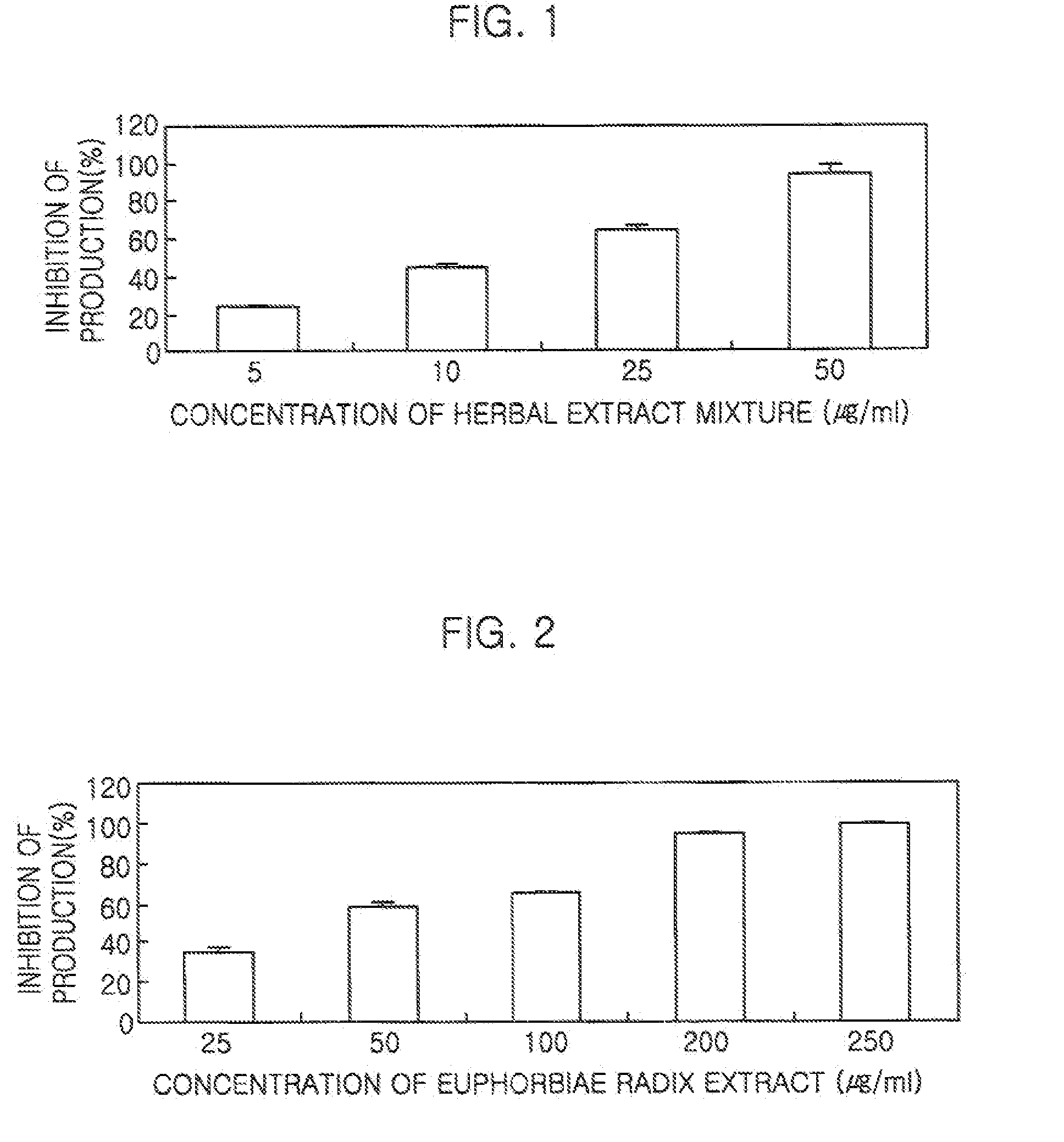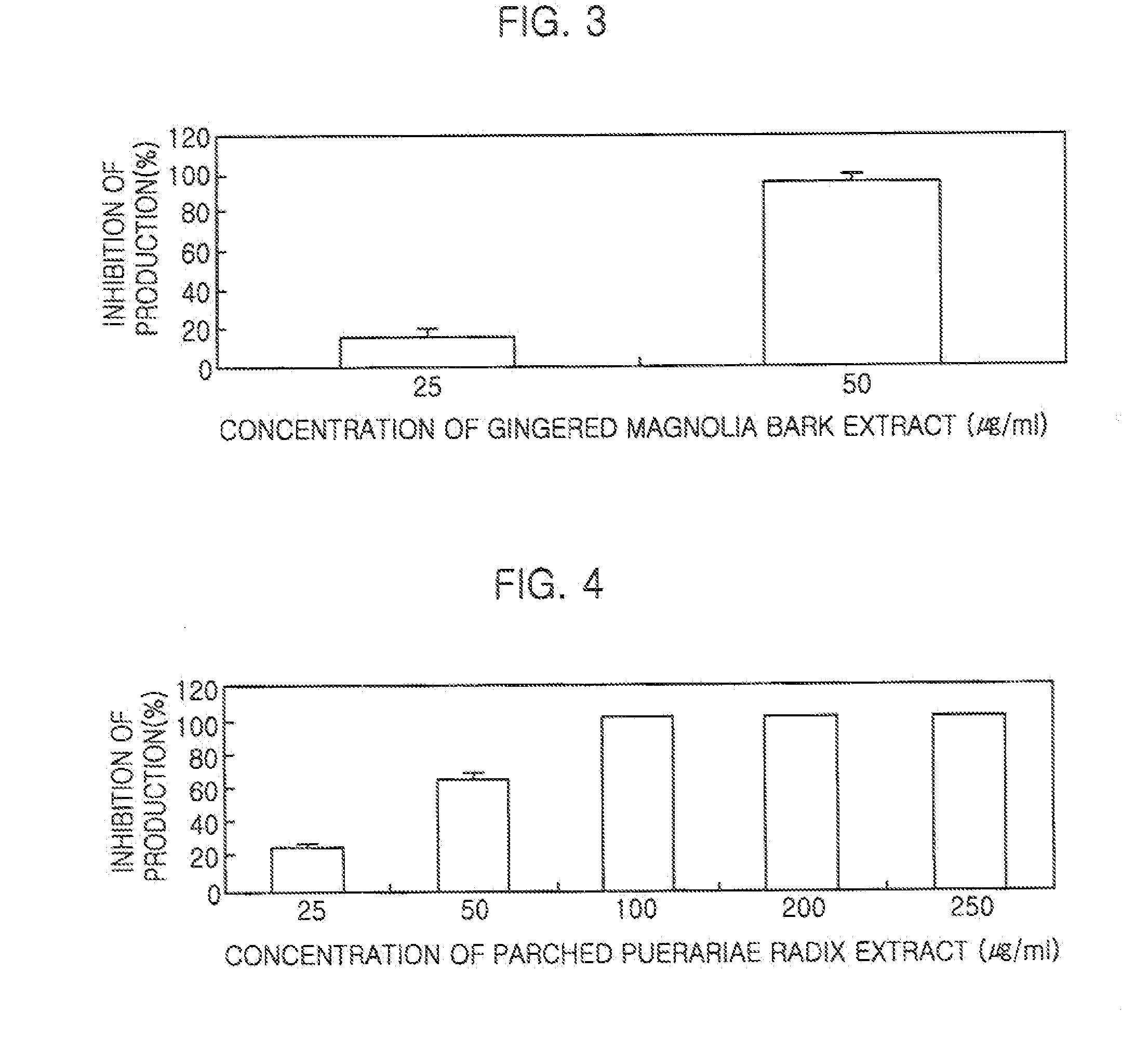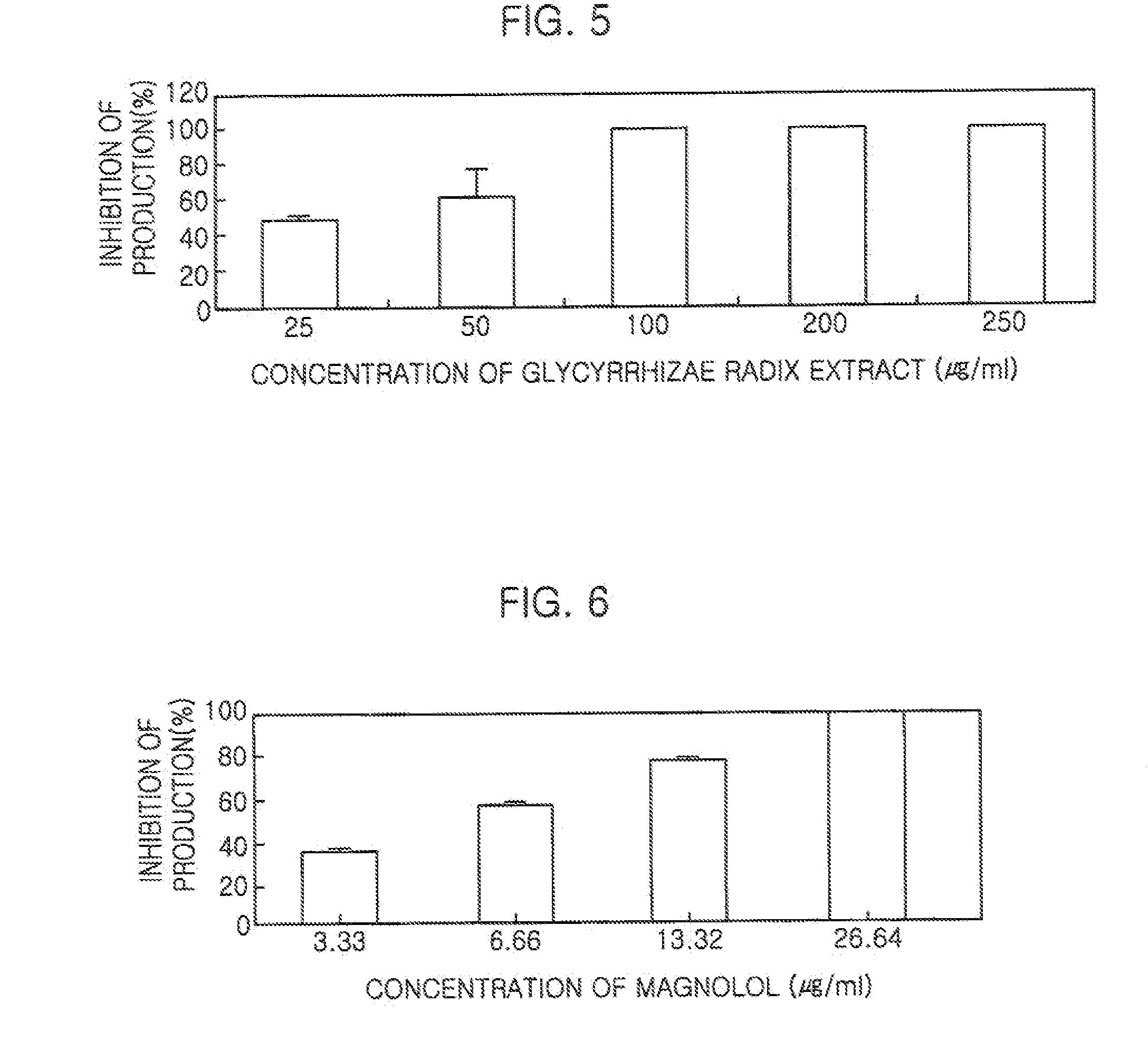Method for treating diabetic complications
a technology for diabetic complications and complications, applied in the field of diabetic complications, can solve the problems of unavoidable use of extreme treatment methods, such as blood dialysis or organ transplantation, abnormal changes in the structure and function of tissues, etc., and achieve the effects of strengthening the spleen and stomach, clearing heat, and enhancing the effect of “gi”
- Summary
- Abstract
- Description
- Claims
- Application Information
AI Technical Summary
Benefits of technology
Problems solved by technology
Method used
Image
Examples
example 1
Preparation of Medicinal Herbal Extract
[0073]Euphorbiae radix was powdered, and 100 g of the powder was taken and extracted with 1 liter of 80% ethanol aqueous solution (ethanol:distilled water=80:20) at ambient temperature (20-30° C.) for 24 hours. The ethanol extract was filtered through filter paper, and then, the extraction and filtration steps repeated five times in the same manner as described above. All the extracts were collected and concentrated under reduced pressure.
[0074]Meanwhile, Euphorbiae radix, 100 g of each of gingered Magnolia bark, parched Puerariae Radix and Glycyrrhizae radix was extracted with 1 liter of 80% ethanol aqueous solution. Each of the extracts was filtered and concentrated under reduced pressure. As a result, obtained were 20 g of the Euphorbiae radix extract, 10 g of the gingered Magnolia bark extract, 20 g of the parched Puerariae radix extract, and 20 g of the Glycyrrhizae radix extract.
example 2
Preparation of Herbal Extract Mixture
[0075]The extracts prepared in Example 1 were mixed together at an amount of 10 g for each herbal extract, thus obtaining 40 g of an herbal extract mixture.
example 3
Another Preparation of Herbal Extract Mixture
[0076]Euphorbiae radix, gingered Magnolia bark, parched Puerariae radix and Glycyrrhizae radix were powdered, and four kinds of the powers were mixed together at an amount of 100 g for each herbal material. The mixture was extracted with 1 liter of 80% ethanol aqueous solution (ethanol:distilled water 80:20) at ambient temperature (20-30° C.) for 24 hours. The ethanol extract was filtered through filter paper, and then, the extraction and filtration steps were repeated five times in the same manner as described above. All the extracts were collected and concentrated under reduced pressure.
PUM
| Property | Measurement | Unit |
|---|---|---|
| temperature | aaaaa | aaaaa |
| temperature | aaaaa | aaaaa |
| concentration | aaaaa | aaaaa |
Abstract
Description
Claims
Application Information
 Login to View More
Login to View More - R&D
- Intellectual Property
- Life Sciences
- Materials
- Tech Scout
- Unparalleled Data Quality
- Higher Quality Content
- 60% Fewer Hallucinations
Browse by: Latest US Patents, China's latest patents, Technical Efficacy Thesaurus, Application Domain, Technology Topic, Popular Technical Reports.
© 2025 PatSnap. All rights reserved.Legal|Privacy policy|Modern Slavery Act Transparency Statement|Sitemap|About US| Contact US: help@patsnap.com



